How we developed our Vision, Mission, and Strategy
Matt Hodges | | 6 min read
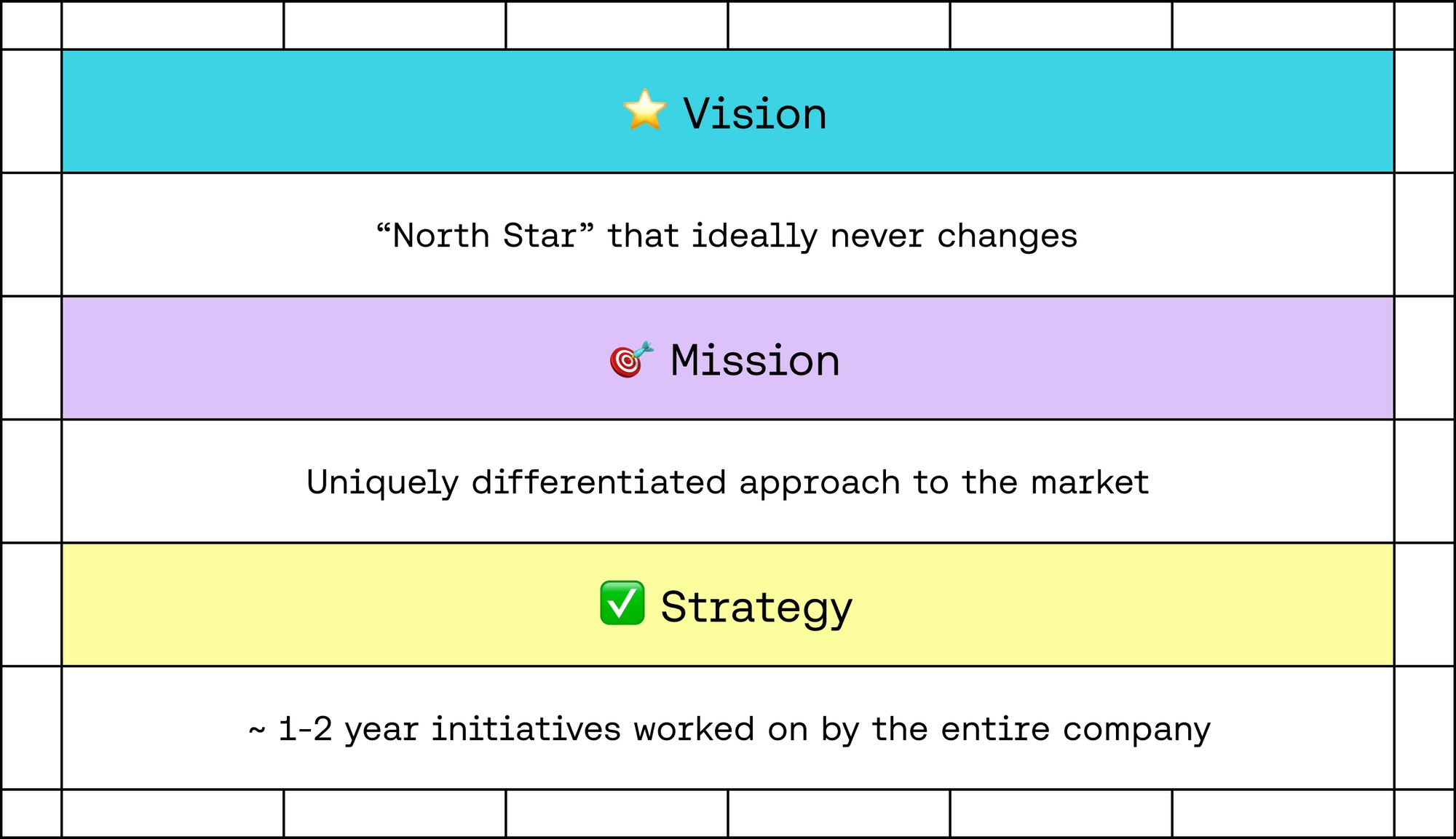
If you don't know where you want to go, how would you know how to get there? And if you don't know, don't expect your team to know either.
"If you could get all the people in an organization rowing in the same direction, you could dominate any industry, in any market, against any competition, at any time"
- Patrick Lencioni, Author of 5 #1 NYT/WSJ bestsellers
I cite this quote a lot because it's spot on. When you get everyone on the same page (literally). Everyone aligned. Everyone rowing in the same direction. Magic happens.
The best leaders I've worked with (and for) have a clear picture of what they're trying to achieve and how they plan to get there. They're able to articulate that on a single page that's easy for every teammate to consume and, most importantly, understand how it translates to their day-to-day work.
Creating the most important page in your company
One of the first things I worked on at Loom was helping the co-founders, Joe and Vinay, articulate their vision, mission, and strategy.
We'd just raised a Series B, and we were planning for our annual company retreat in Barbados (tough life, I know). We had a few new faces, and it was the start of a big year for the company. It was the optimal time to rally and align everyone behind what we wanted to achieve. And how.
We started with a simple template on a Notion page.
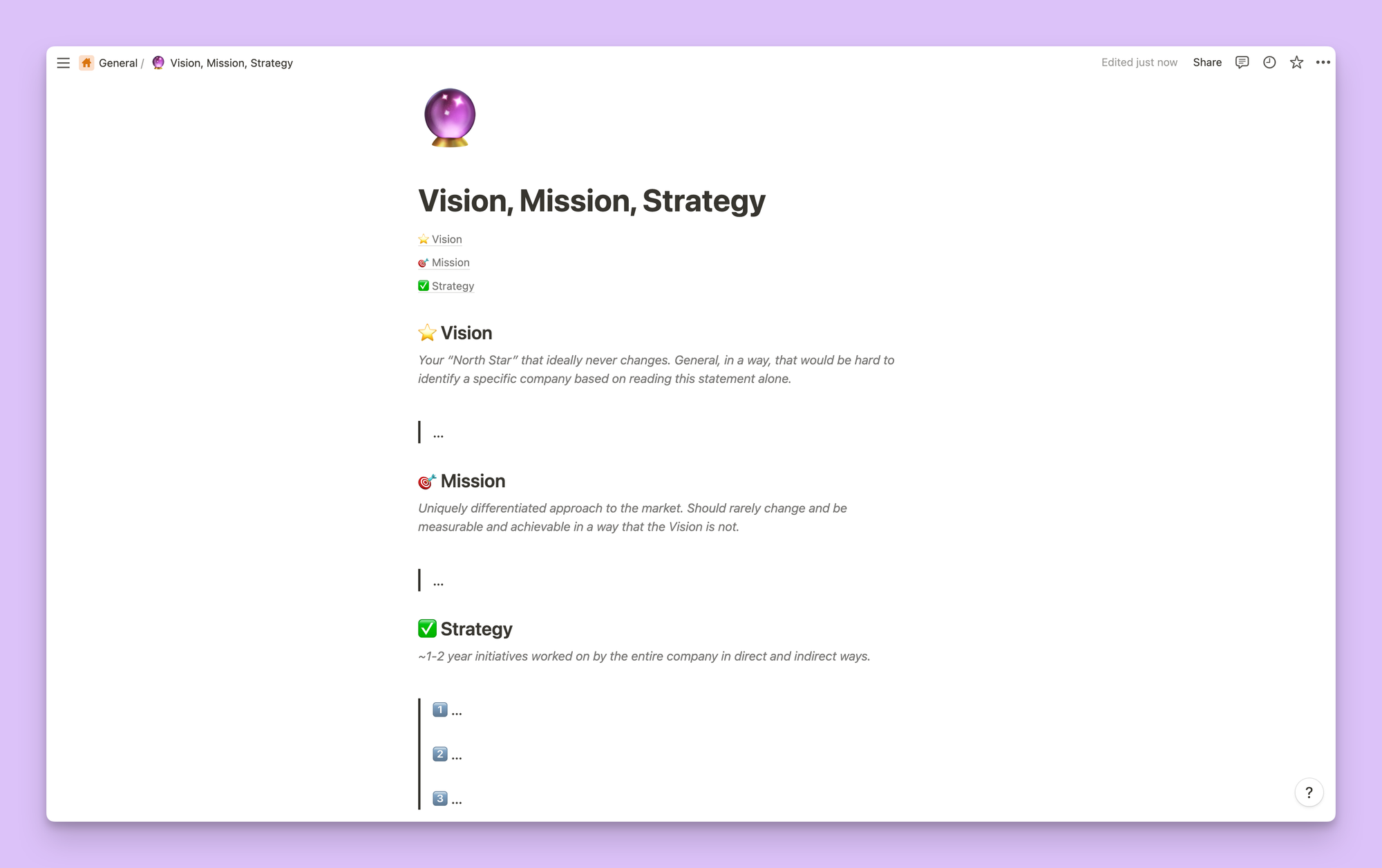
With an understanding of what we needed to articulate, we used Threads (in its first incarnation) to discuss and debate what each of these three things should be. It was all very natural. All very organic. And, of course, all done async.
It was as simple as that. Joe and Vinay delivered the output at the retreat. And Loom went on to become a unicorn within 18 months.
Causation or correlation? 🤷♂️
Adapting the approach
A couple of years later, when I started my own consultancy, I worked directly with the executive teams at three early-stage startups to articulate each of their vision, mission, and strategies. One has since shut down, one was acquired by Dropbox, and the other has reached the incredible milestone of profitability.
As I worked with each team, I adapted and evolved my approach to extracting everything I needed to know about the company, the product, the market, their aspirations, and their ideas. In each case, I interviewed key members of the team and used their input to create a first draft. That draft would then go through multiple rounds of getting feedback and making changes before getting the rubber stamp of approval and eventually sharing it back to the company.
12 questions, many different answers
When I eventually joined Equals in June of this year, I'd developed a standard set of questions that I would then go and ask Bobby (Co-founder and CEO), Ben (Co-founder and CPO), and Chris (early employee and our Head of Finance and Analytics).
- What is Equals?
- Why does Equals exist?
- If a person was successfully using Equals, how would their life be better/different?
- If a team/company was successfully using Equals, how would their life be better/different?
- What does success for Equals look like in the next 2 years?
- What does success for Equals look like in the next 5 years?
- What does success for Equals look like in the next 10 years?
- If you fast forward 2-3 years, what needs to have changed about Equals as a product in order to be successful?
- If you fast forward 2-3 years, what needs to have changed about Equals as a company in order to be successful?
- What are the biggest challenges that could prevent us from achieving success?
- If we could only do three things, what would they be?
- If you had to pick one measure of success for Equals (other than revenue) would it be?
If it's not obvious, just swap out "Equals" for your own company if you want to use these questions to help develop your own vision, mission, and strategy. 😀
Extracting the input
With all the questions answered, I took the raw responses (either written down or from a Google Meet transcript) and dropped them into a Notion database.
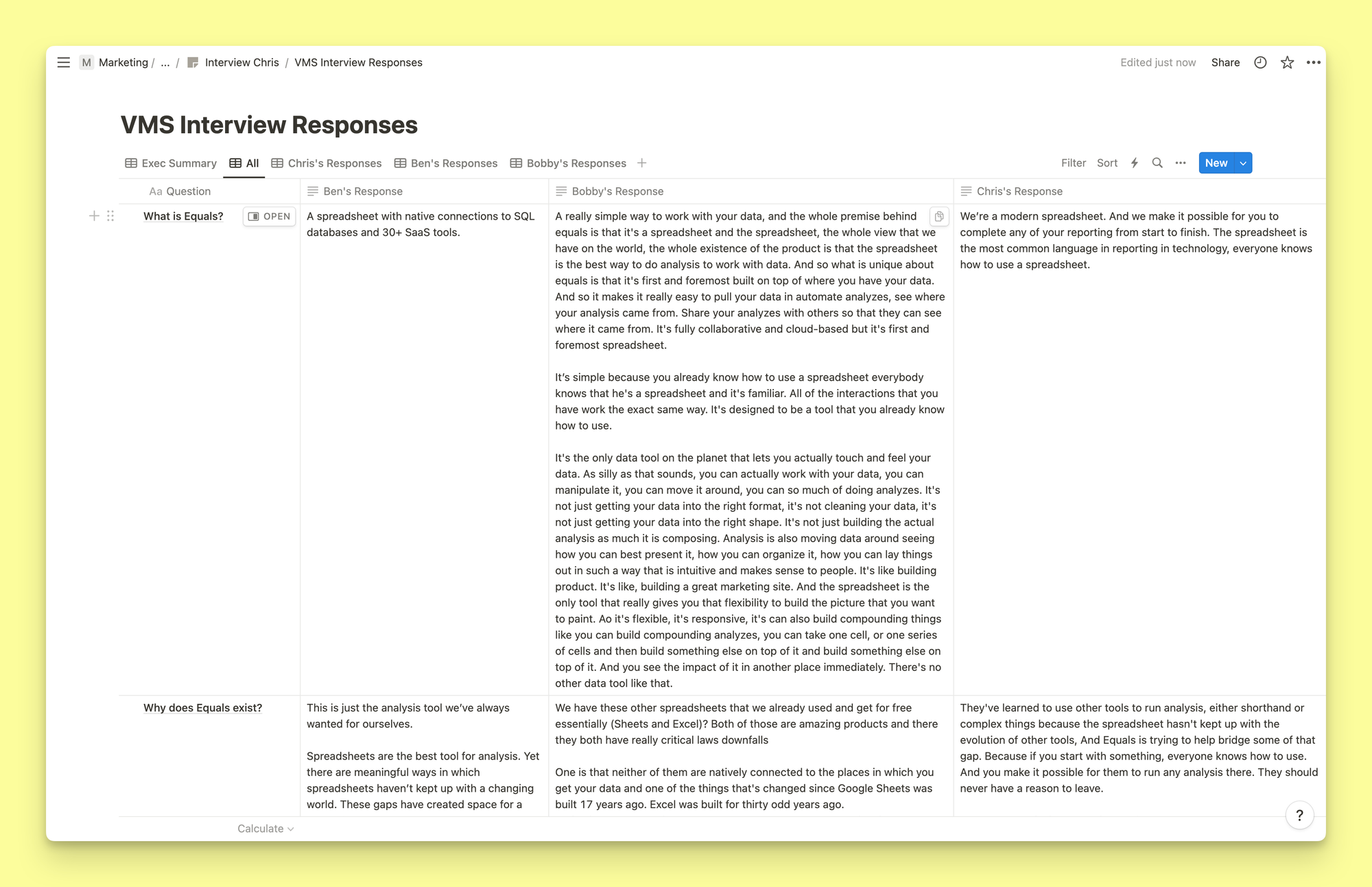
Then, I used the (conveniently released) new AI capabilities in Notion to extract the key points and summarize everyone's responses. Thank you, AI. 😅
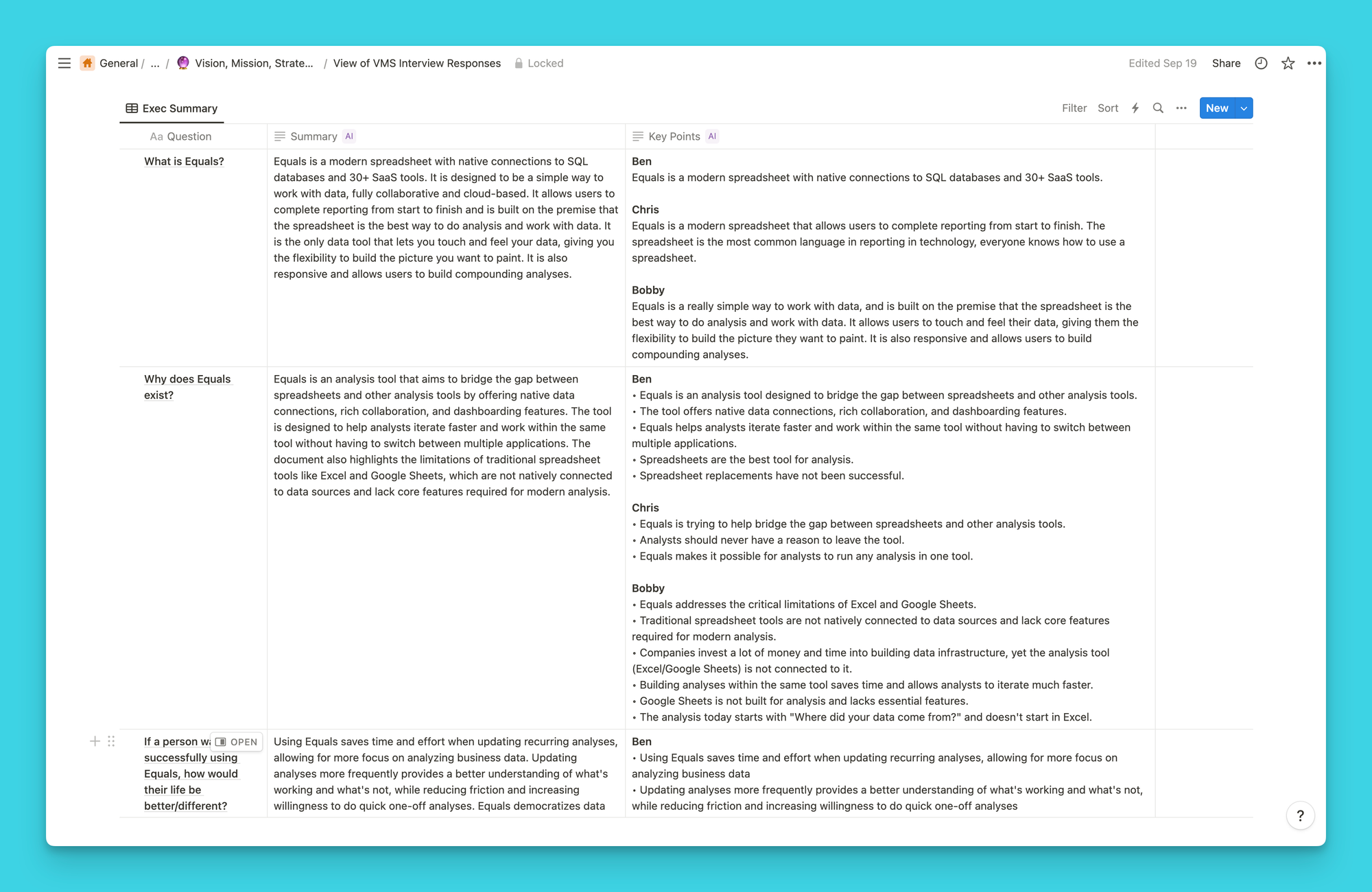
This was the input I needed to start drafting Equals' vision, mission, and strategy one-pager that we'd later share with all cellmates at our weekly team meeting.
Writing the one-pager
The next step was getting Bobby, Ben, and Chris together to write some statements together and have a live dialogue, informed by the summary of their responses to my 12 questions.
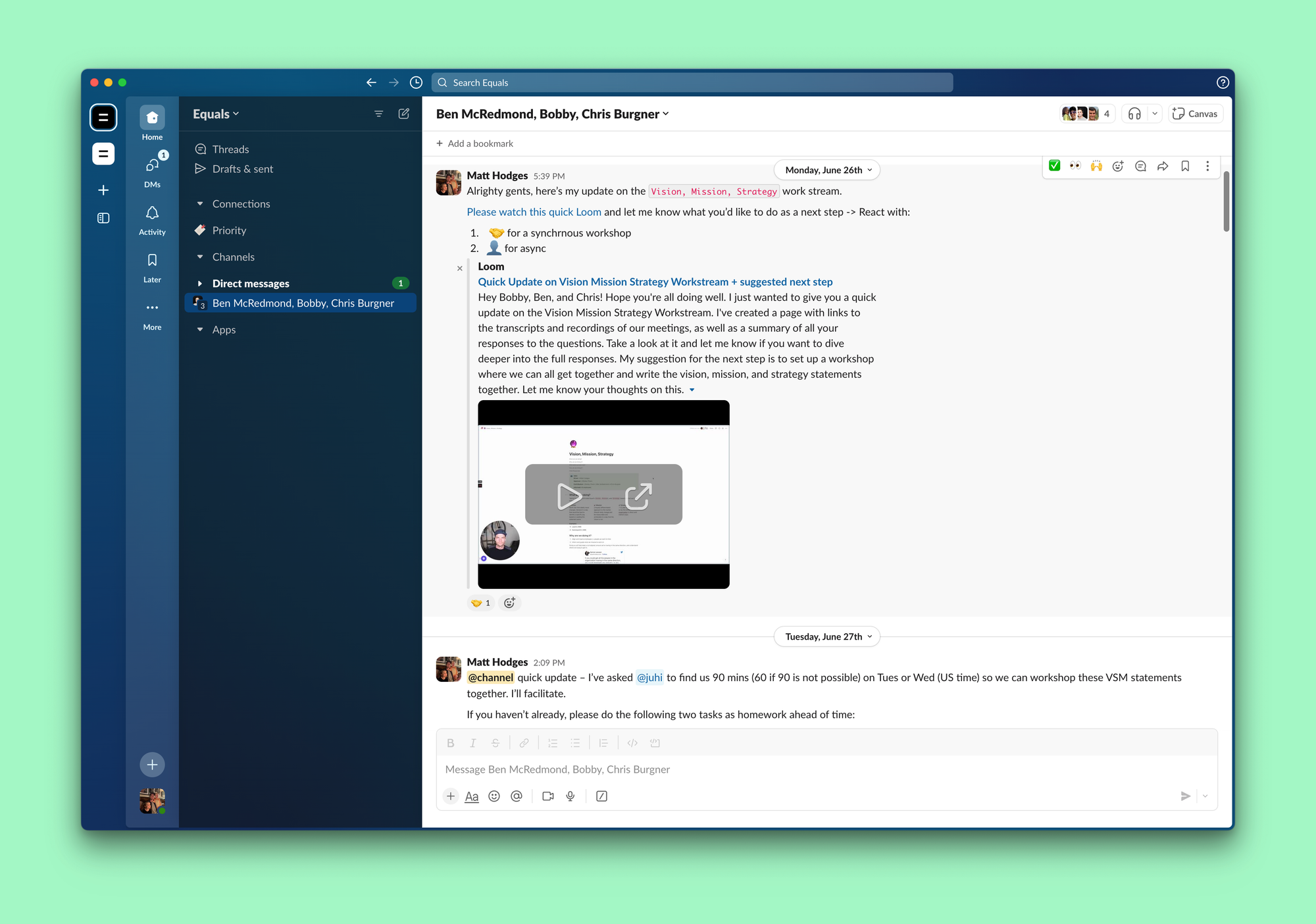
We jammed together in FigJam.

I used the output of that workshop to write a first draft.
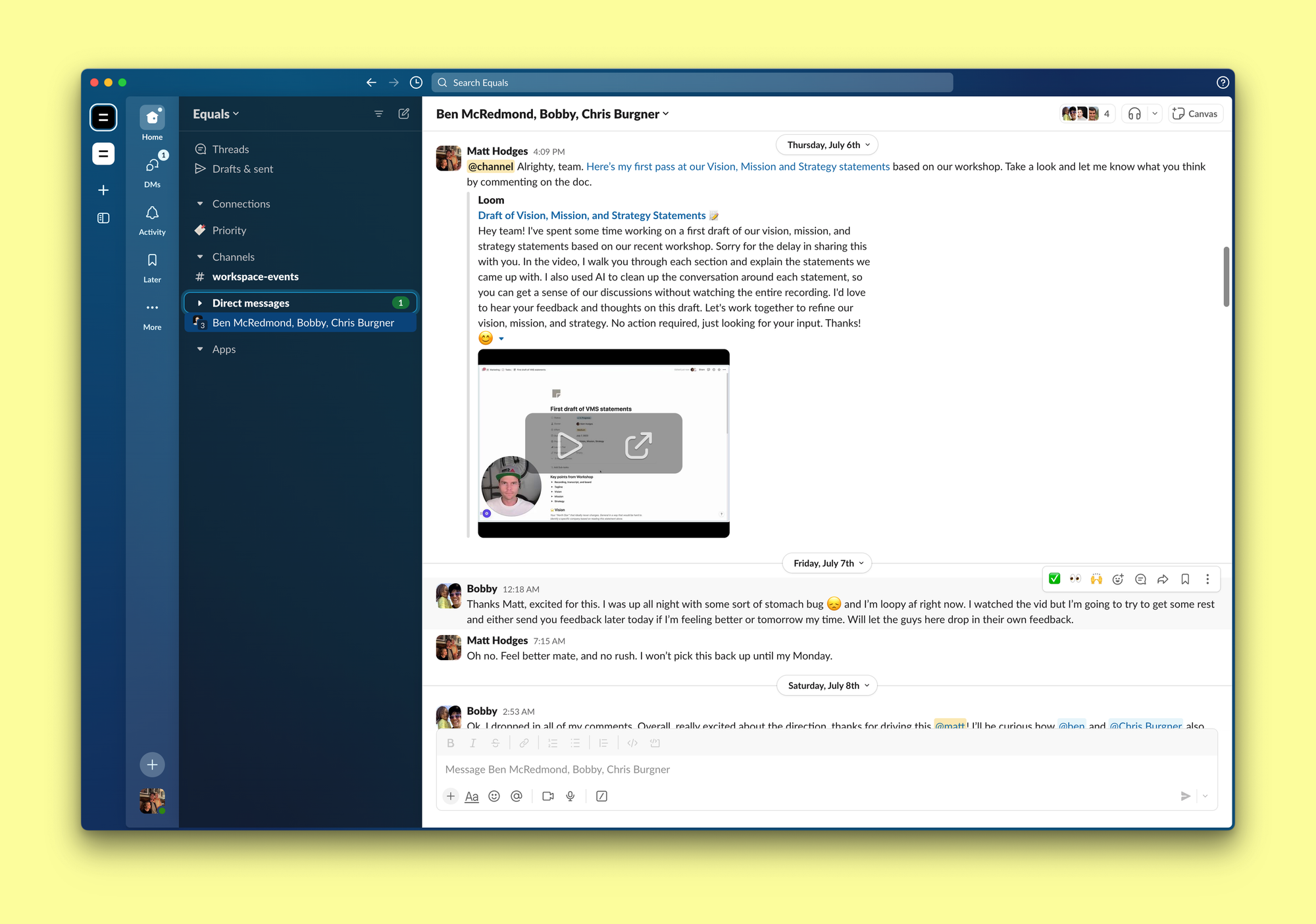
After a few rounds of async feedback and iteration, a couple of weeks later, we'd aligned on Equals' Vision, Mission, and Strategy. 🙌
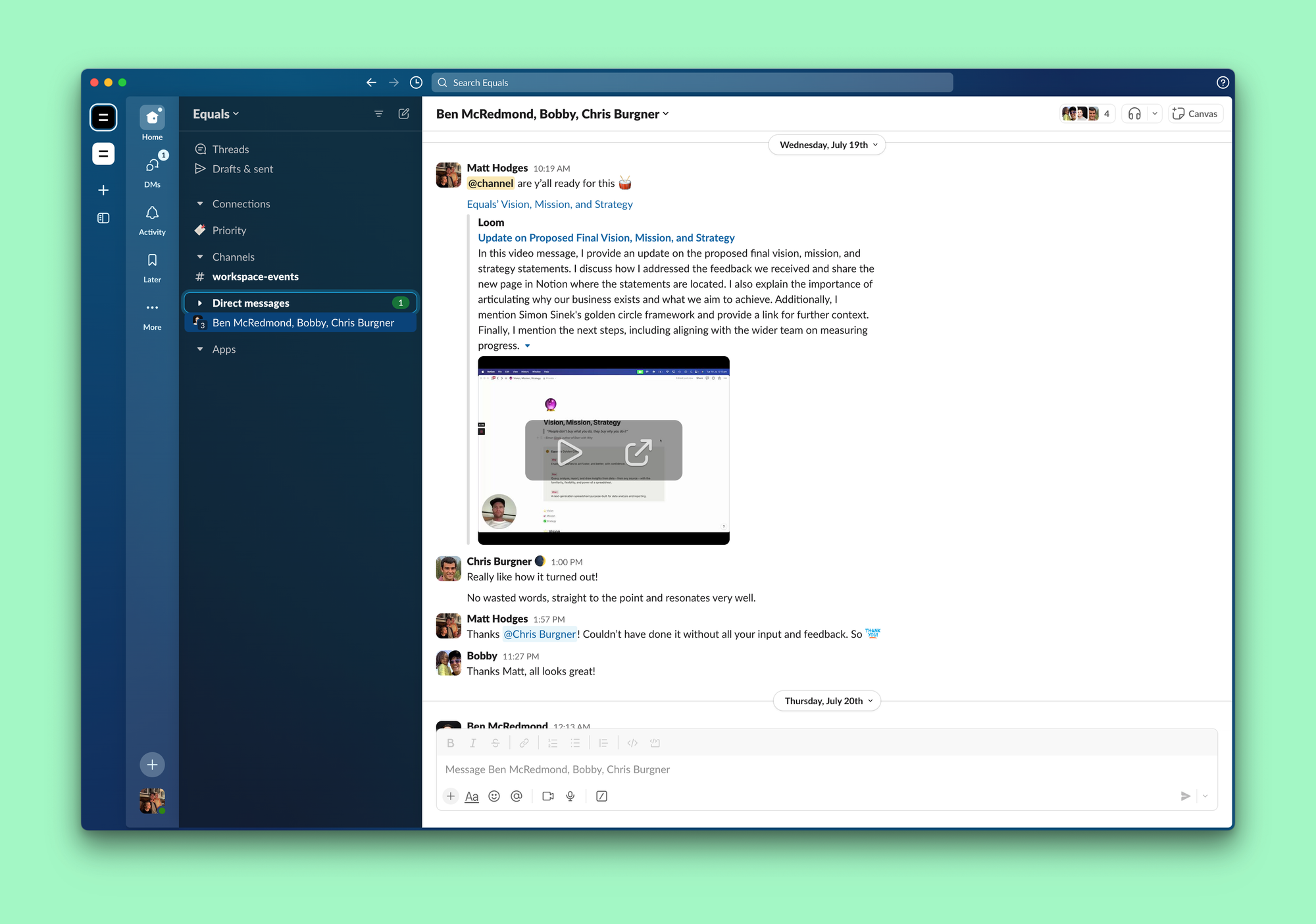
The whole process, from start to finish, took about a month.
Where we landed
Here's our actual one-pager (strategy redacted - I can't share all our secrets!) that Bobby delivered to the company in our next team all-hands. It now serves as a must-read/watch asset for new cellmates, so they, too, know where we want to get to. And how we plan to get there.
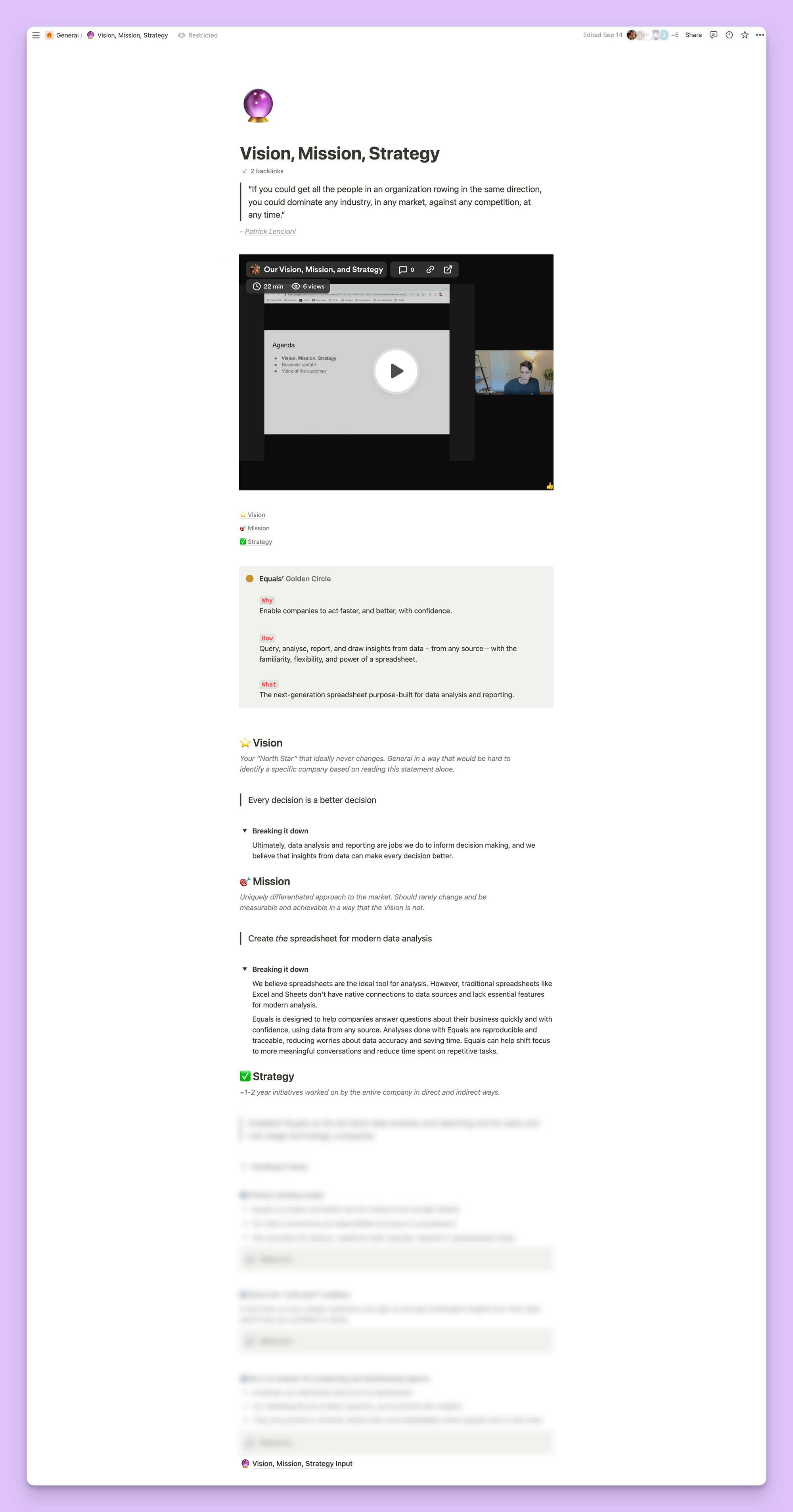
And every week (with the odd exception here and there), we start our team meeting by revisiting our vision, mission, and strategy. Leaders each take turns giving their own take on where it comes from, why it's important, and how we're actively making progress.
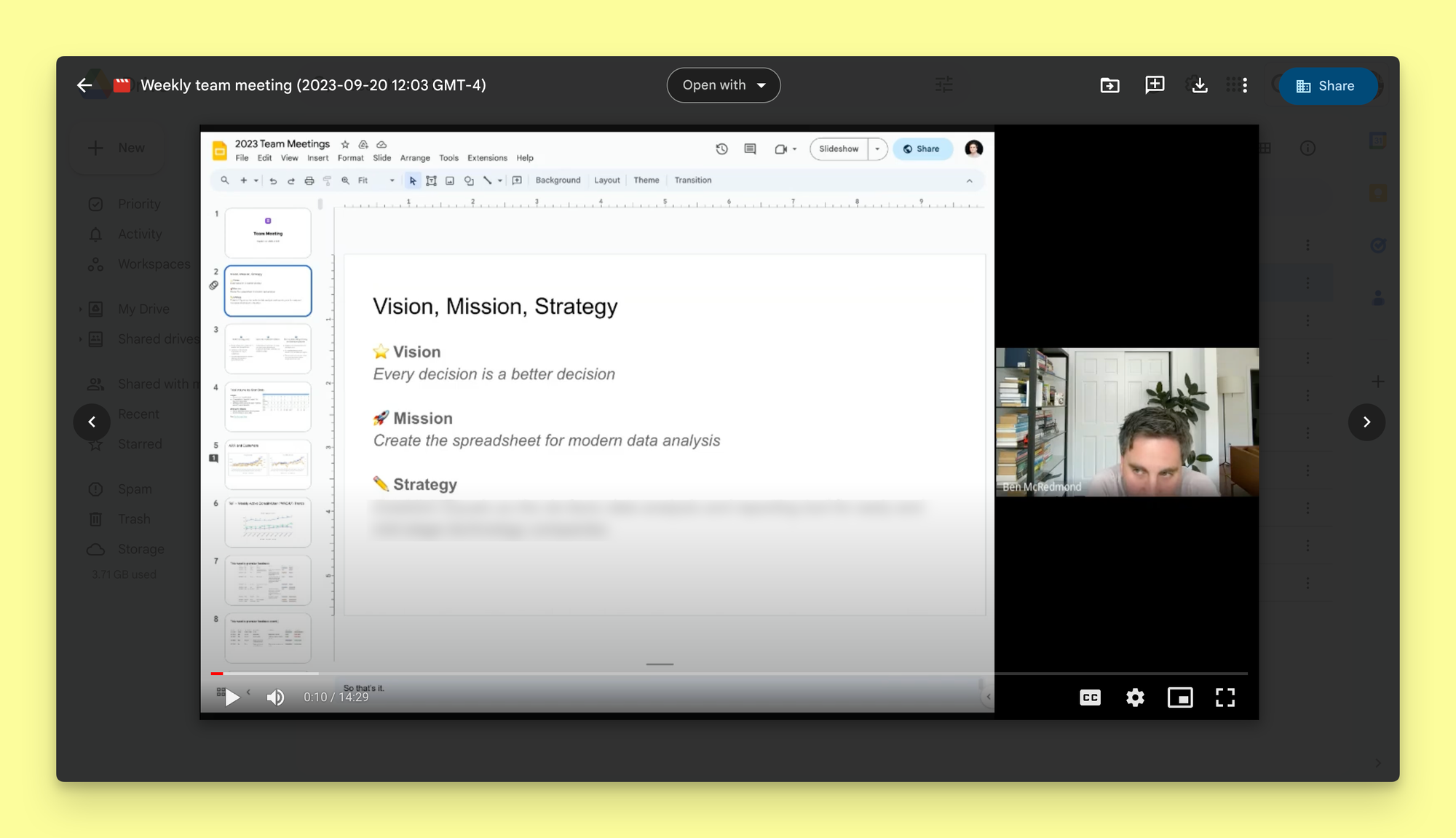
It can get repetitive, but if you're going to repeat anything to your whole company, this is probably a good thing to pick.
"We are what we repeatedly do. Excellence, then, is not an act, but a habit."
- Aristotle
There's no better time than now
I can't stress enough the value of taking the time to run this (or a similar exercise) at your own company.
I've seen first-hand how it helps align everyone behind a common goal, which makes planning and prioritizing what to work on next that much smoother.
I've also seen how it helps get everyone to speak the same language when pitching investors, leads, and future employees. It's as if we were all singing from the same song sheet.
Do you know what your vision, mission, and strategy is?
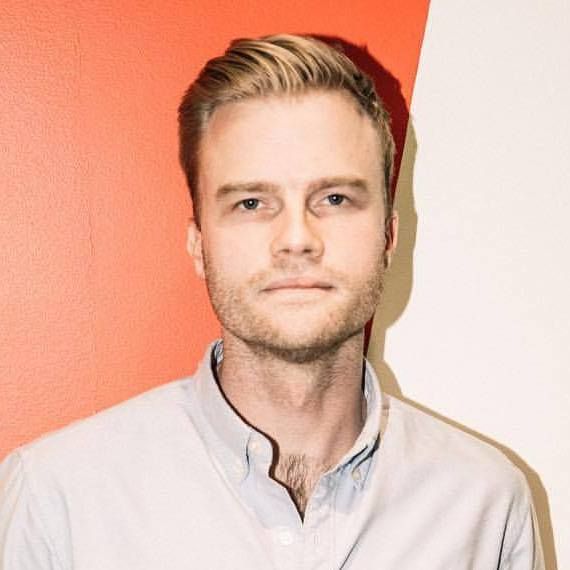
By Matt Hodges
Early leader at Atlassian, Intercom, and Loom. Now at Equals.

